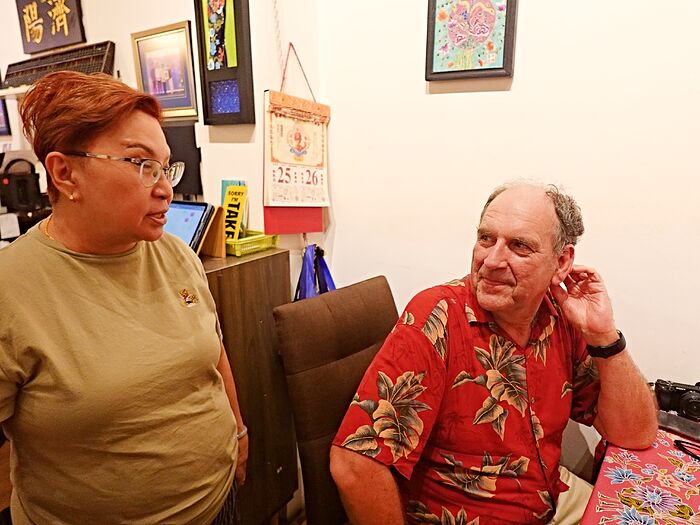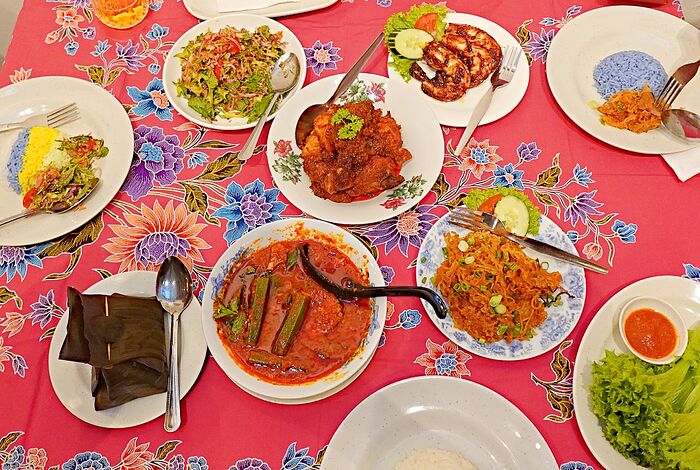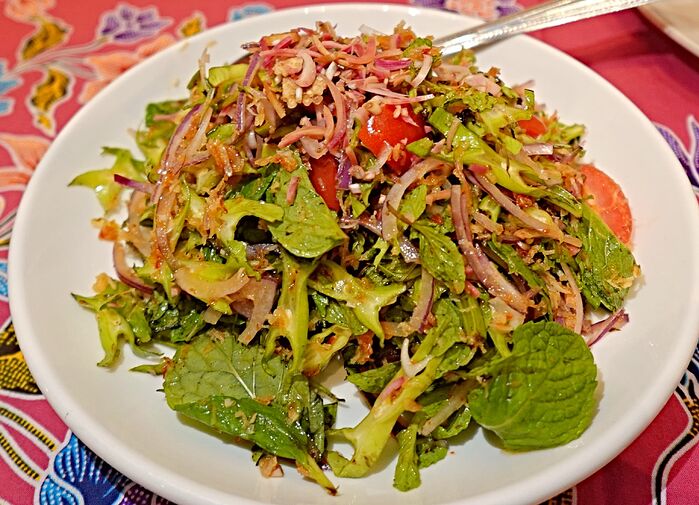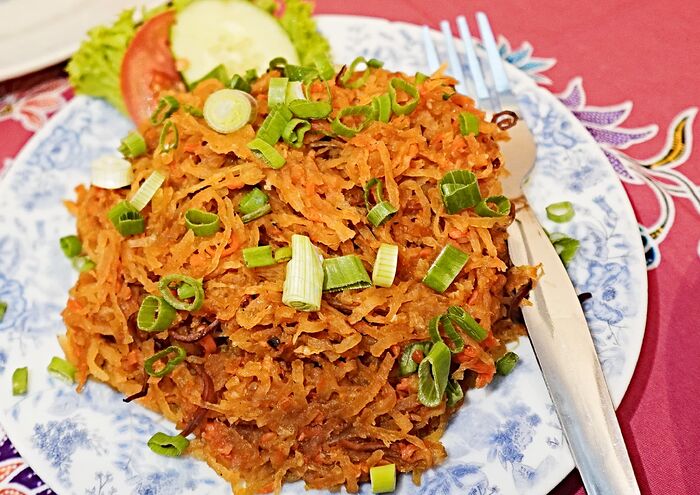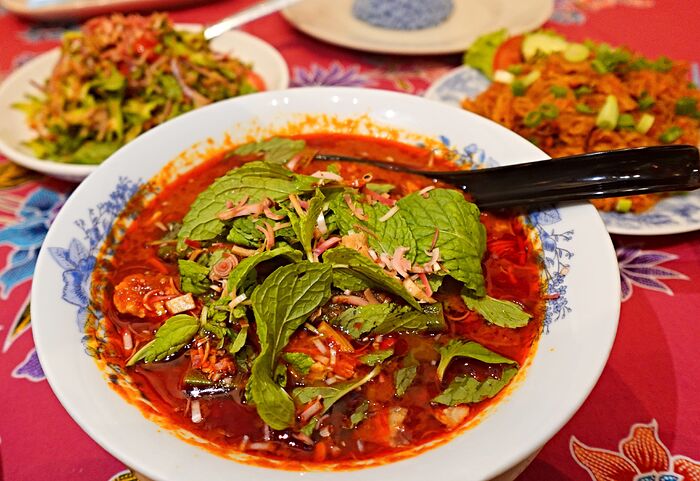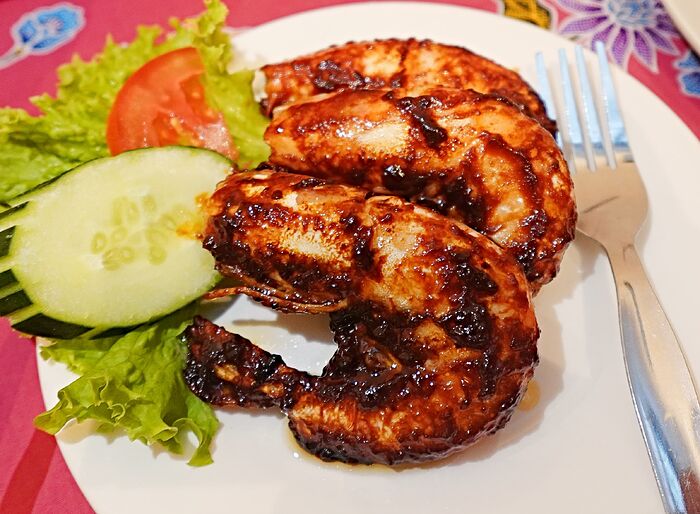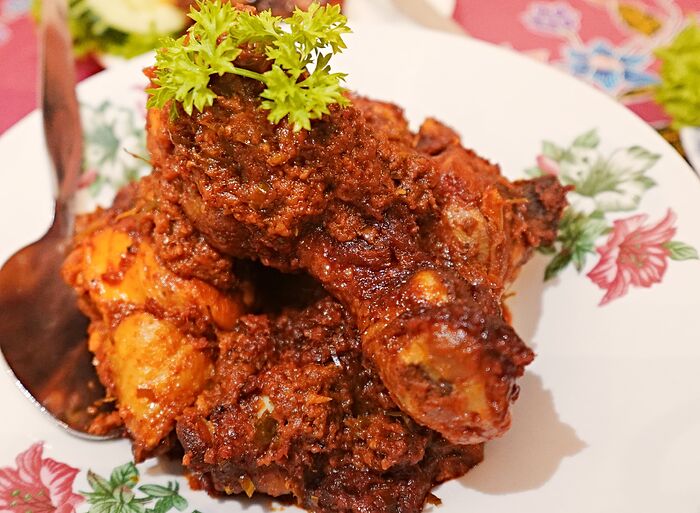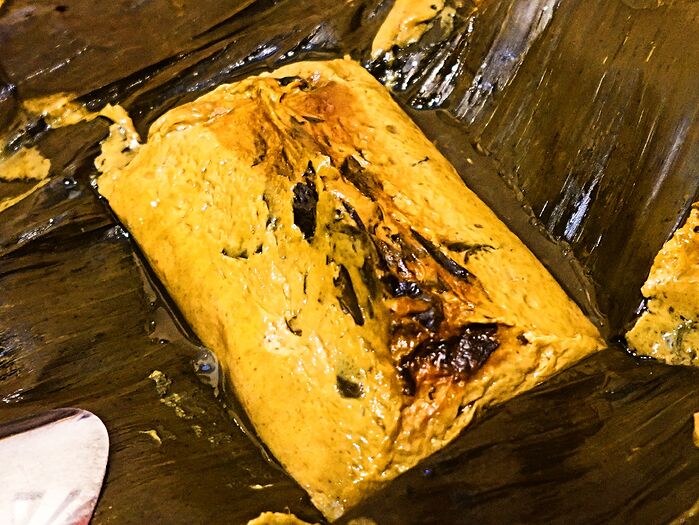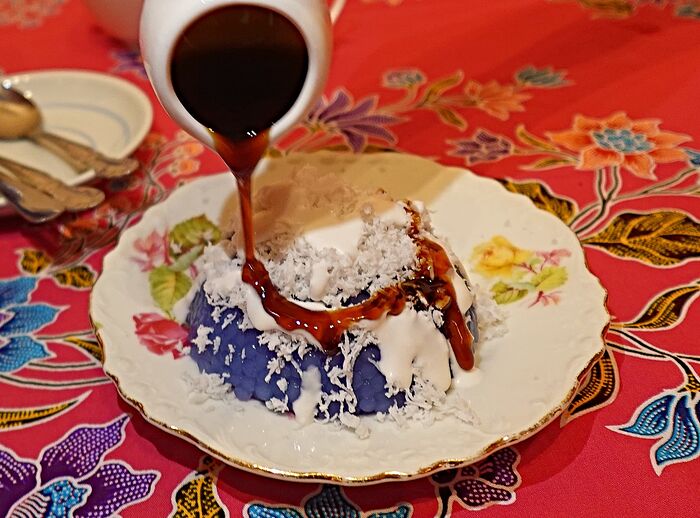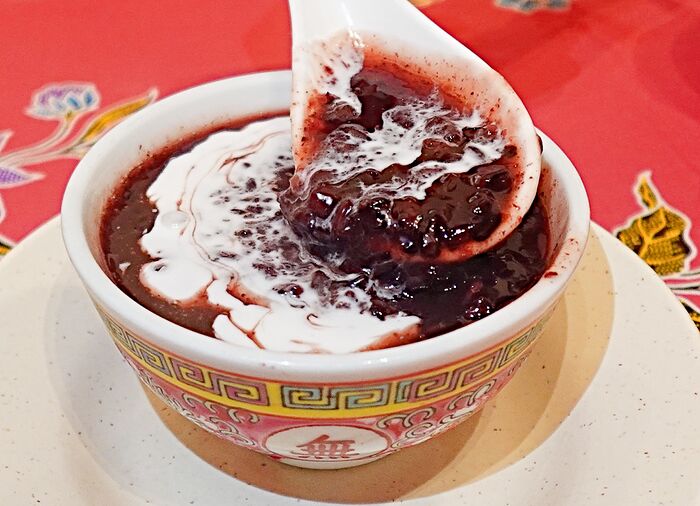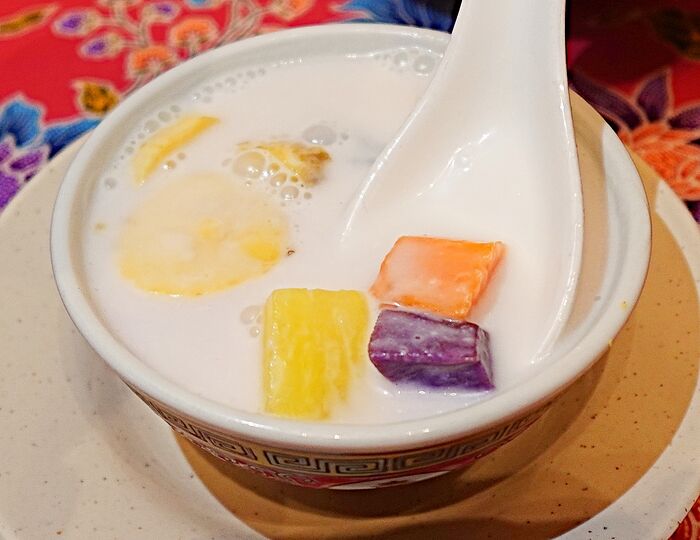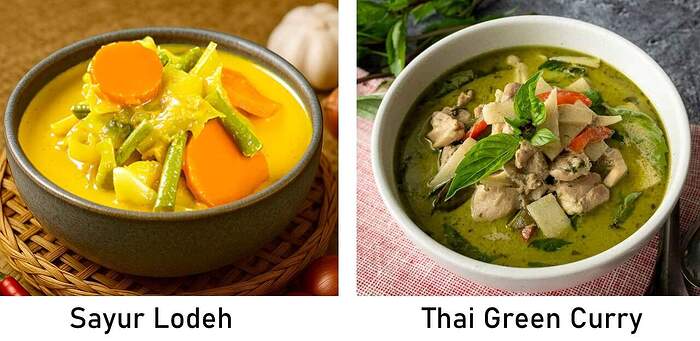Nyonya dinner at Bibik’s Kitchen Nyonya Cuisine this evening. “Bibik” is an honorific term used to address older female members of the Straits-born Chinese (also known as Baba-Nyonya or Peranakan) community which is indigenous to the former British Straits Settlements of Penang, Singapore and Malacca.
The origins of Nyonya food stretched as far back as the Straits-born Chinese community’s history, from its four-century-old beginnings in Malacca where early Chinese traders (almost exclusively men) inter-married with the local women: Malays, Javanese, Bugis, Portuguese-Eurasians, Indians - to form a unique multi-cultural community built upon a Chinese (mainly Hokkien/Fujianese) foundation.
Along the way, through the last two centuries, as the British colonized parts of what would eventually become British-Malaya, the Straits-Chinese community developed the unique identity which it was to be associated with now: a Chinese identity, English-speaking, but with strong Malay cultural influences: in terms of dress, speech, lifestyle and the arts, including the culinary arts.
The Indonesian/Malay ronggeng dance, adapted by the Straits-born Chinese into what is known as ronggeng Peranakan. This music/dance event was held a fortnight ago at the Penang Peranakan Mansion.
The Straits-born Chinese’ cuisine, popularly called Nyonya cuisine, is renowned for their complex spicing, time-consuming preparations, and their strong, assertive flavours which transcend cultural boundaries.
There are two main branches of Nyonya cuisine: the Southern-Nyonya centered in Malacca and Singapore, where the Malay & Hokkien-based cooking had strong Javanese influences. The other branch is Northern-Nyonya, centered in Penang, which started off with Malaccan/Southern Nyonya origins in the late 18th-century, but which began to absorb Siamese/Thai and Burmese influences over the next 200 years to develop its own unique characteristics today.
Our Penang-Nyonya dinner this evening was at Bibik’s Kitchen, a small family-run eatery started back in 2017 by Bibik Girlie Chua, an accomplished cook who carries on the heirloom recipes of her father, Chua Kok Seng’s Baba-Nyonya family.
Our dinner this evening consisted of:
-
Rose apple (jambu ayer) kerabu - a typical Nyonya salad of crisp slices of fresh rose apple, cucumber, shallots and torch ginger, dressed in lime juice and sambal belacan. It’s piquant, with sharp, sweet flavours.
-
Chicken rendang - this was, hands-down, one of the best rendition of the dish, and one of the tastiest dry curries we’d ever had. The chicken pieces were fall-off-the-bone tender, and the flavors were perfectly balanced.
-
Jiu hu char - made from shredded jicama, finely-julienned dried cuttlefish, carrots and pork, topped with spring onions, this was another perfectly rendered dish, and much better prepared than those in other Nyonya restaurants in Penang.
-
Sambal udang - my dining companions loved this dish, but I’m not used to the more watery rendition here. The “sambal udang” I’m more used to would have thicker gravy, and sharper flavours from the use of tamarind, and perhaps also sweeter. But the chili-spice level here was perfect.
-
Eggs Belanda - this was a classic Penang-Nyonya dish: fried eggs, topped with a sour-sweet tamarind-infused gravy, with shallots, scallions and red chilis to pep up the whole dish. Disappointingly, what we got here was yet another “more-watery-than-expected” rendition. Instead of thick, caramelly sweet-sour gravy, this one was borderline soupy.
It’s been said that Nyonya food culture, like other food cultures borne out of home kitchens instead of cooking schools or culinary institutes, tend to have significant variations between different households. So, obviously, the Chua family’s tradition called for more soupy, liquid gravies in their dishes, as compared to the average renditions.
-
Penang-Nyonya otak-otak - this was another very well-made dish: spicy seafood custard, wrapped in banana leaf parcels and steamed. “Otak-otak” are close cousins to Thai hor mok pla or Cambodian amok trei.
My first taste of Cambodian amok trei was back in 2007 at Battambang, a Cambodian restaurant in the heart of downtown Oakland, California. I remembered thinking then that, “Hey, this is almost like Penang otak-otak!”.
Desserts
7) Bee koh moi (left) and Bubur cha cha (right)
“Bee koh moi” is known by its Malay name “pulot hitam” in Malacca and Singapore. Here in Penang, the Hokkien/Fujianese term, meaning “black glutinous rice porridge”, is being used, but the preparation method is exactly the same: black glutinous rice cooked with sugar, a knot of pandan leaves, and sometimes dried longans, then served with thick coconut milk.
“Bubur cha cha” is another popular sweet dessert: a selection of tubers (sweet potato, taro, yam) cooked in coconut milk , pandan leaves, and sugar.
Both versions here were good, but not the best around.
- Sago Gula Melaka - sago pudding served with thick coconut milk and Gula Melaka/palm sugar.
Overall, we very much enjoyed the savoury main dishes, and would come back for some of them, namely the “jiu hu char” and “chicken rendang”, which we thought were some of the best renditions we’d had. And that unique, well-concocted “rose apple kerabu”.
Address
Bibik’s Kitchen Nyonya Cuisine
73, Sri Bahari Road, 10050 George Town, Penang, Malaysia
Tel: +6012-669 7488
Opening hours: 11.30am-3pm, 6pm-9pm Tue to Sun. Closed on Mondays.
















